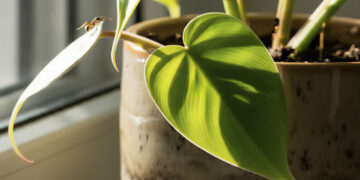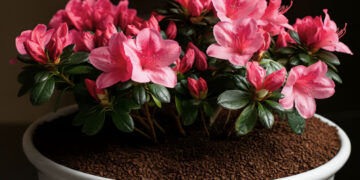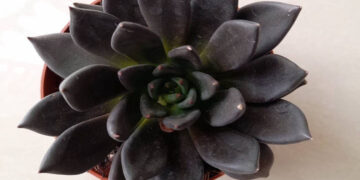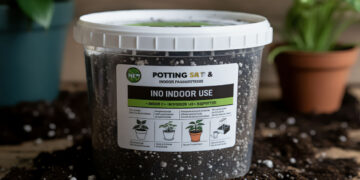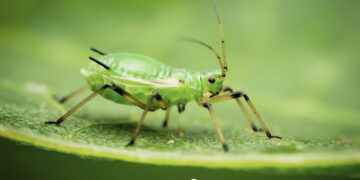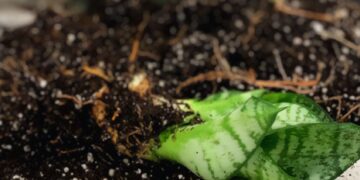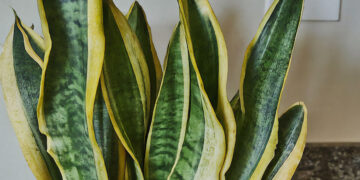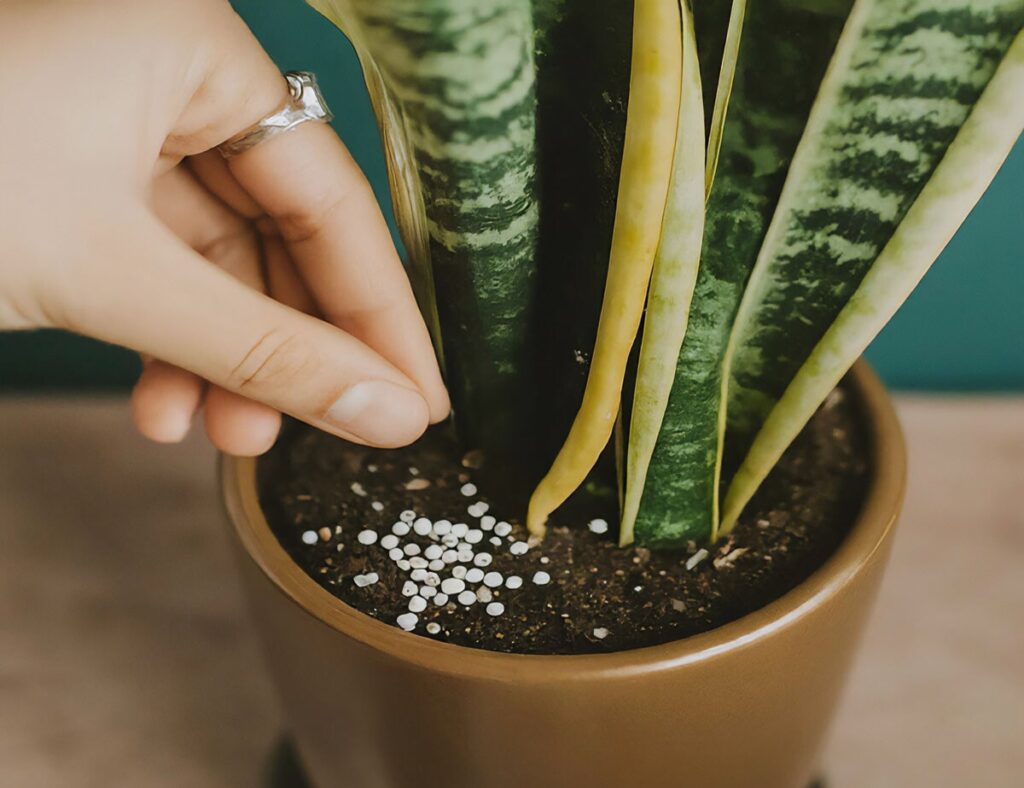
Although all snake plant or Sansevieria varieties need nutrition to function, fertilizing is beneficial for snake plants. At the same time, you know when and how to use it. Here, I have spelled out how to boost your snake plant’s flourishing with optimal fertilization and have better Sansevieria care.
Best Types of Fertilizers
When it comes to the type of fertilizer, balanced, water-soluble fertilizers such as those with an N-P-K ratio of 10-10-10 or 20-20-20 are practical. They meet the nutritional needs, so the snake plants do not lack phosphorus, nitrogen, and potassium anymore.
Organic fertilizers such as compost tea, worm castings, Fish emulsion, and seaweed extracts are profitable. If you use it in the right way, it will minimize the risk of root burn.
Forms of Fertilizers
Fertilizers come in different forms, so you may need more information about which one to choose.
– Pellets or granular
This kind of fertilizer takes a long time to release steady nutrients, which we call slow-release that delivers nutrients over an extended period, reducing the need for frequent use.
– Liquid
To use this type of fertilizer, first mix it with water. It works very quickly and is perfect for regular snake plant watering.
– Sticks or spikes
If you don’t have time to fertilize the snake plant, I suggest using these sticks or spikes because they are easy to use and suitable. Insert them into the soil around the base of the snake plant correctly so that the roots don’t burn
When should we fertilize snake plants?
Timing is Everything. During the growing season, I mean from the start of spring to the beginning of autumn, the snake plant actively produces new leaves and needs more nutrients. So stick to fertilizing the plant every 4 to 6 weeks. Keep in mind that the fertilization rate is related to the snake plant’s light needs. If your plant is not receiving enough light, reduce the fertilization rate to every 2 or 3 months.
Do not at all ease off on the fertilizing in autumn and winter Because the snake plant is in its sleep period. Nutrients remain in the snake plant soil and damage the roots.
In addition, I don’t fertilize my snake plant when it’s under stress, like when repotting snake plant or when it’s suffering from heat shock, sunburn, or pests.
How to fertilize a snake plant?
Just take regular watering before applying, pour the diluted solution evenly on the soil, and be careful not to spill anything on the snake plant leaves.
Flushing Soil After Fertilizing
If you see brown tips on snake plants or white crust on the soil, the soil of the plant should be washed. I usually flush the soil once or twice during the growing season after fertilizing. In fact, I water quite so that the water leaves the pot and the salt does not remain in the soil.
Ideal Nutrient Ratios and Micronutrients
Suppose the snake plant fertilizer you bought has the same ratio of nutrients. In that case, you can rest assured that their nitrogen, potassium, and phosphorus are okay. You may be interested in how each of the nutrients in the fertilizer helps the plant and keeps the overall snake plant healthy.
Nitrogen is essential to Support green foliage, Phosphorus to root and snake plant flower growth, potassium to disease resistance, Magnesium is used to support snake plant, photosynthesis, and manganese, zinc, copper, and boron are used to process macronutrients.
Organic Fertilizer Options
If you love nature and soil health is important to you, Organic fertilizers such as compost tea or worm castings are profitable. They increase the quality of the soil and release nutrients slowly. Moreover, fish emulsion and seaweed extracts are key to snake plant soil because they contain a range of micronutrients.
It can be said that if you use organic products, not only will you improve the health of snake plants, and they will suffer fewer problems such as root burn, but you will also support the health of the soil ecosystem.
Indoor vs. Outdoor Fertilizing
When I compare the snake plant that grows outside with the one that is kept in the living room, I understand that the first one needs more nutrients because snake plant growth rate is higher. Due to environmental factors, the nutrients of the soil may go down. So maybe there is no difference in fertilizing methods, but you should fertilize more snake plants outside.
Household Items as Fertilizer
If you are a coffee lover like me, don’t throw away coffee grounds. Dilute it and add it to the soil to boost the plant’s soil nitrogen. Or you can crush the eggshell to add calcium to the soil. Actually, banana peel water is also rich in potassium, so it’s not bad to try it as well.
You may not believe it, but the Epsom salt you use in the bath is a good supplement as a snake plant fertilizer. Add a tablespoon to a gallon of water and give it to the plant once a month during the growing season to fully supply soil magnesium.
Remember, more isn’t always better. Keep balance and make sure that they are decomposed; otherwise, pests will attack your snake plant.
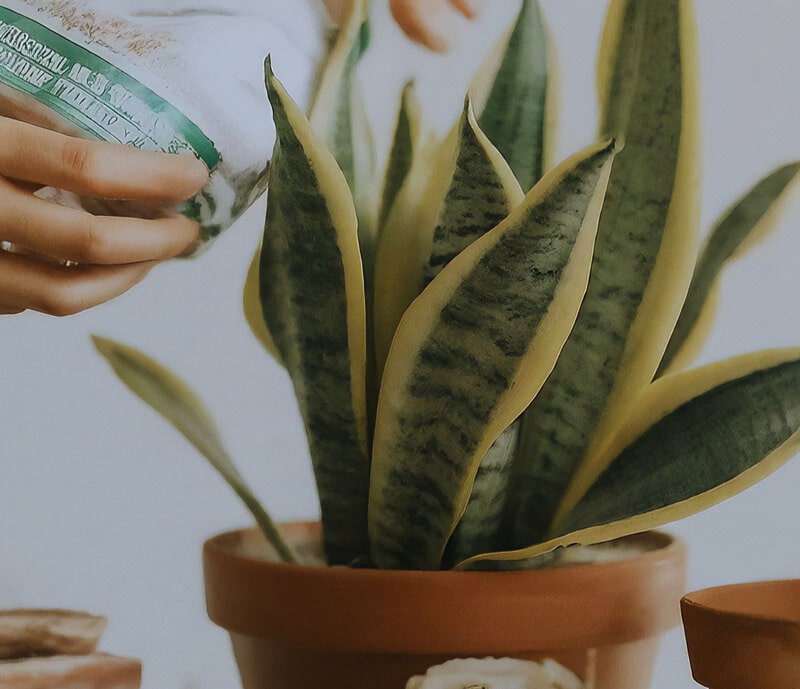
Common Mistakes in Fertilizing Snake Plants
Under-fertilizing
Suppose you see that Sansevieria needs to grow better. In that case, snake plant leaves are turning yellow or pale, the size of the leaves is reduced, the soil nutrients are low, and it needs fertilization.
Over-Fertilizing
If you over-fertilize or apply it too frequently, the leaf tips and edges will become brown and crispy.
Using High-Nitrogen Fertilizers
High-nitrogen fertilizers may tempt you with root growth to have big and strong leaves but forget it. Use balanced fertilizers instead.
Not Watering after and before fertilizing
If you don’t water the soil before fertilizing, the roots will burn. After fertilizing, you can help distribute nutrients evenly in the soil with regular irrigation.

Source:
Got questions or experiences? Share them in the comments—your insights help everyone.


